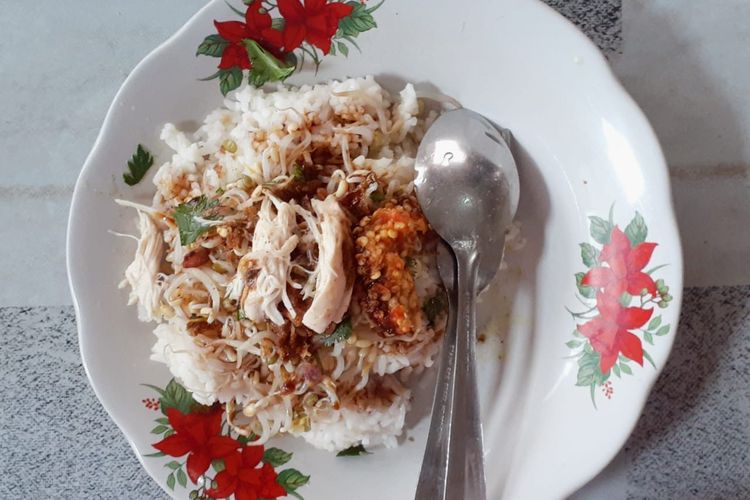
Dim sum, a beloved culinary tradition originating from China, has captured the hearts and palates of food enthusiasts around the world. This article delves into the history, variety, preparation, and cultural significance of dim sum, providing an in-depth look at this quintessential aspect of Chinese cuisine.
Historical Origins of Dim Sum
Early Beginnings
Dim sum, meaning “touch the heart,” traces its origins back to ancient China, particularly the southern region of Guangdong (Canton). It is believed that dim sum evolved from the tradition of yum cha (drinking tea), which dates back to the Song Dynasty (960–1279 AD). The practice began when travelers on the ancient Silk Road would stop at teahouses to rest and refresh themselves with tea and light snacks.
Development Through Dynasties
Over the centuries, the art of dim sum developed and flourished, particularly during the Tang (618–907 AD) and Song Dynasties. As teahouses became more popular, the variety of snacks offered expanded, eventually evolving into the elaborate array of small dishes we know today. By the time of the Ming Dynasty (1368–1644 AD), dim sum had become an integral part of Chinese culinary culture.
The Dim Sum Experience
Traditional Teahouses
Dim sum is traditionally enjoyed in teahouses, where patrons gather to share a meal, drink tea, and socialize. The atmosphere in these teahouses is often bustling and lively, with carts filled with steaming baskets and plates of food being wheeled around the room. Diners select dishes as the carts pass by, allowing for a communal and interactive dining experience.
The Role of Tea
Tea plays a central role in the dim sum experience. Various types of tea, such as jasmine, oolong, and pu-erh, are typically served to complement the flavors of the dishes. The act of drinking tea is not just for refreshment but also aids in digestion, making it an essential part of the meal.
Variety and Diversity of Dim Sum
Steamed Dishes
Steamed dishes are a cornerstone of dim sum, known for their delicate and subtle flavors. Some of the most iconic steamed dim-sum dishes include:
- Har Gow (Shrimp Dumplings): These translucent dumplings are filled with plump shrimp and wrapped in a thin, elastic dough made from wheat and tapioca starch.
- Siu Mai (Pork and Shrimp Dumplings): These open-faced dumplings are filled with a mixture of ground pork, shrimp, mushrooms, and water chestnuts, then topped with a bit of roe or a single pea.
- Char Siu Bao (Barbecue Pork Buns): These soft, fluffy buns are filled with a sweet and savory mixture of char siu (barbecued pork) and are a favorite among dim sum aficionados.
Fried and Baked Dishes
Fried and baked dishes add a crispy and flavorful contrast to the steamed offerings. Popular examples include:
- Spring Rolls: These crispy rolls are filled with a mixture of vegetables, meat, and sometimes noodles, then deep-fried to a golden brown.
- Turnip Cakes: Made from grated turnip mixed with rice flour and often bits of sausage or dried shrimp, these cakes are pan-fried until crispy on the outside and soft inside.
- Egg Tarts: These delicate pastries consist of a flaky crust filled with a smooth, sweet egg custard, and are often enjoyed as a dessert.
Rice and Noodle Dishes
Rice and noodle dishes are also integral to a dim sum spread, offering heartier options:
- Cheung Fun (Rice Noodle Rolls): These silky-smooth rolls are made from steamed rice flour batter and can be filled with shrimp, barbecued pork, or beef, then drizzled with a sweet soy sauce.
- Sticky Rice in Lotus Leaf: Glutinous rice is wrapped in lotus leaves and steamed, often filled with a savory mixture of pork, chicken, mushrooms, and salted egg yolk.
- Congee: This rice porridge can be plain or mixed with various ingredients like pork, century egg, and scallions, providing a comforting and warming dish.
Preparation and Culinary Techniques
Craftsmanship and Skill
The preparation of dim sum requires a high level of craftsmanship and skill. Many dim sum chefs undergo years of training to master the techniques needed to create these delicate dishes. Skills such as dough making, filling preparation, and steaming are essential to producing high-quality dim sum.
Traditional and Modern Methods
While traditional methods of preparing dim sum are still widely used, modern techniques and equipment have also been incorporated. For instance, some restaurants use automated steamers and dough mixers to maintain consistency and efficiency, especially in large-scale dim sum establishments.
Regional Variations
Cantonese Dim Sum
Cantonese dim sum, originating from the Guangdong province, is the most widely recognized and popular style. Characterized by its wide variety of dishes, delicate flavors, and emphasis on fresh ingredients, Cantonese dim sum is often considered the gold standard.
Other Regional Styles
Beyond Cantonese dim sum, other regions in China have their own interpretations and specialties:
- Shanghai Dim Sum: Known for xiao long bao (soup dumplings), which are filled with a savory broth and minced meat.
- Fujian Dim Sum: Features dishes with a strong emphasis on seafood, reflecting the coastal region’s culinary traditions.
- Sichuan Dim Sum: Incorporates the bold and spicy flavors characteristic of Sichuan cuisine, often using Sichuan peppercorns and chili oil.
Cultural Significance
Social and Familial Bonds
Dim sum is more than just a meal; it is a social and cultural ritual that strengthens familial and social bonds. Families and friends gather around the table to share food, engage in conversation, and enjoy each other’s company. This communal aspect is a key element of the dim sum experience.
Celebrations and Traditions
Dim sum is also associated with various celebrations and traditions. It is commonly enjoyed during special occasions such as Chinese New Year, weddings, and family reunions. The sharing of dim sum during these events symbolizes unity, prosperity, and joy.
Global Popularity and Adaptation
Dim Sum Around the World
Dim sum has gained immense popularity worldwide, with dim sum restaurants and teahouses found in major cities across the globe. In places like Hong Kong, New York, London, and Sydney, dim sum has become a beloved culinary tradition, attracting both locals and tourists.
Fusion and Innovation
As dim sum spreads globally, chefs and restaurateurs have introduced fusion and innovative variations to cater to diverse tastes and preferences. Creative twists on traditional dim sum include dishes like truffle siu mai, lobster har gow, and even vegan and gluten-free options. These adaptations reflect the evolving nature of dim sum while maintaining its core essence.
Health and Nutrition
Nutritional Value
Dim sum dishes vary widely in their nutritional content. Steamed options like har gow and siu mai are generally lower in calories and fat compared to fried items like spring rolls and turnip cakes. Many dim sum dishes are rich in protein, vitamins, and minerals, thanks to ingredients like seafood, lean meats, and vegetables.
Health Considerations
While dim sum can be a part of a balanced diet, it is important to enjoy it in moderation, especially when indulging in richer, fried, or high-sodium dishes. Health-conscious diners can opt for steamed options and pair their meal with plenty of tea, which aids in digestion and offers antioxidant benefits.
Economic Impact
Dim Sum Industry
The dim sum industry plays a significant role in the economy, particularly in regions with a strong Chinese cultural presence. Dim sum restaurants range from small family-owned establishments to large chains, contributing to local economies through employment, tourism, and cultural exchange.
Culinary Tourism
Dim sum has become a key attraction for culinary tourism, drawing food enthusiasts to destinations known for their dim sum offerings. Culinary tours, cooking classes, and food festivals centered around dim sum provide unique experiences for travelers and support the growth of the hospitality and tourism sectors.
Environmental Considerations
Sustainable Practices
As awareness of environmental issues grows, many dim sum establishments are adopting sustainable practices. This includes sourcing ingredients locally, reducing food waste, and using eco-friendly packaging. Sustainable seafood and organic produce are increasingly featured in dim sum menus, reflecting a commitment to environmental responsibility.
Traditional vs. Modern Approaches
Balancing traditional dim sum preparation methods with modern sustainability practices poses both challenges and opportunities. While maintaining the authenticity of dim sum is important, integrating sustainable practices can enhance the overall dining experience and support environmental conservation efforts.
Technological Advances
Innovations in Preparation
Technological advances have influenced the preparation and delivery of dim sum. Automated steamers, precision cooking equipment, and digital ordering systems streamline operations and improve consistency. These innovations help dim sum restaurants meet the high demand while maintaining the quality and authenticity of their offerings.
Online Ordering and Delivery
The rise of online ordering and delivery services has expanded access to dim sum, allowing customers to enjoy their favorite dishes from the comfort of their homes. Virtual dim sum classes and tutorials also enable food enthusiasts to learn the art of dim sum making, fostering a deeper appreciation for this culinary tradition.
Future Trends
Health-Conscious and Dietary Preferences
As dietary preferences and health consciousness continue to evolve, dim sum is adapting to meet these trends. Plant-based dim sum options, gluten-free dumplings, and reduced-sodium recipes are becoming more prevalent, catering to a broader range of dietary needs and preferences.
Culinary Creativity and Fusion
The future of dim sum is likely to see continued culinary creativity and fusion, with chefs experimenting with new flavors, ingredients, and presentation styles. These innovations will keep dim sum dynamic and relevant, appealing to both traditionalists and modern food enthusiasts.







